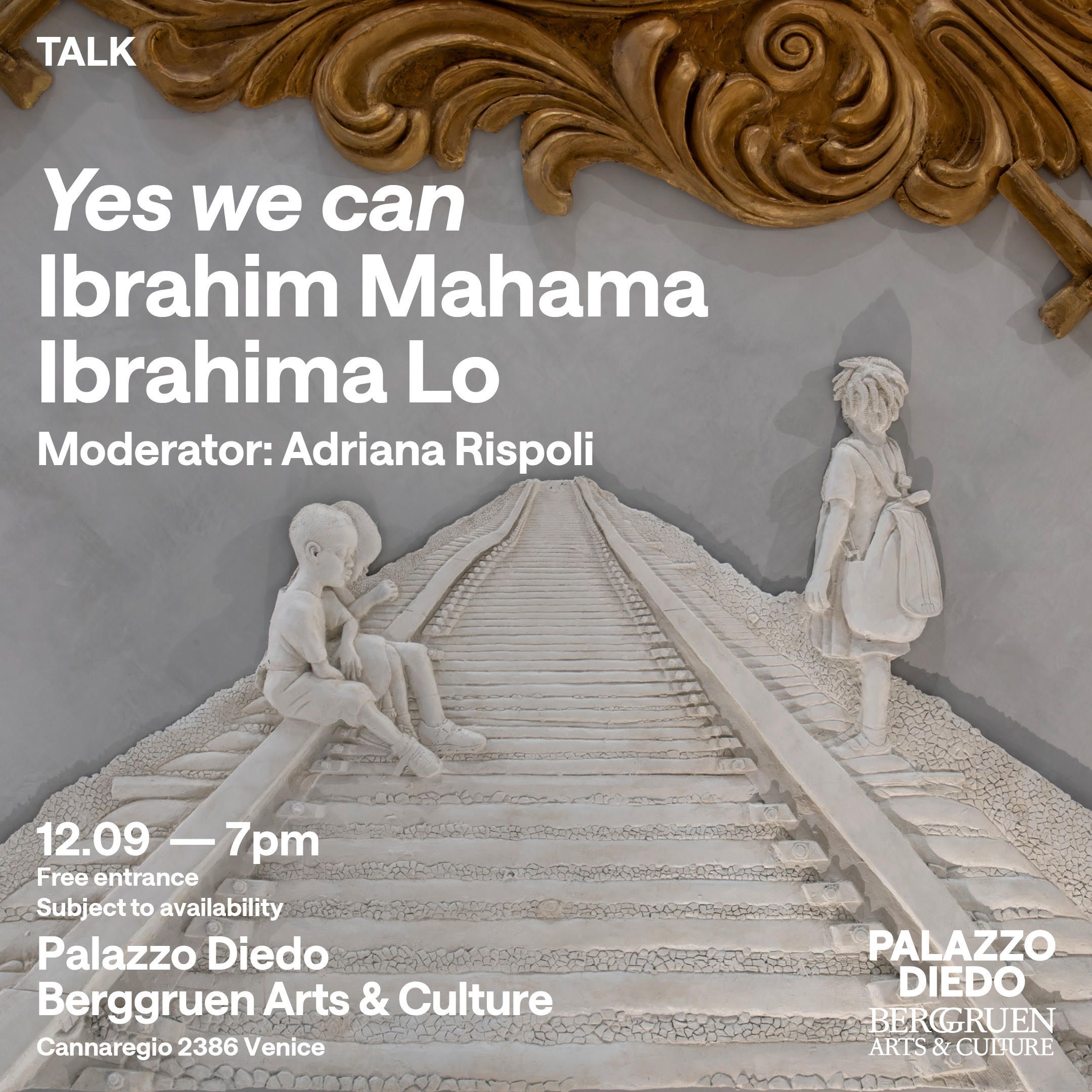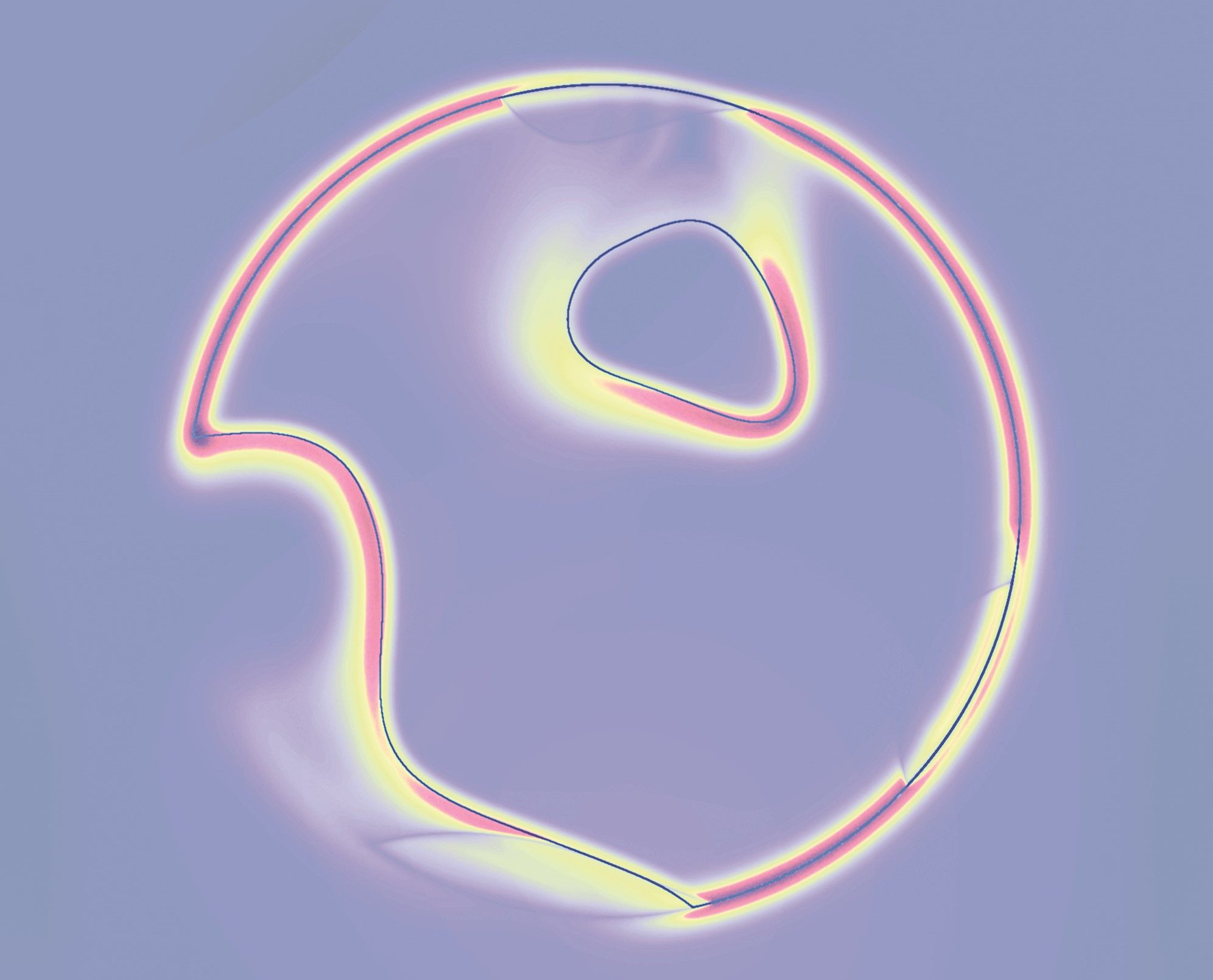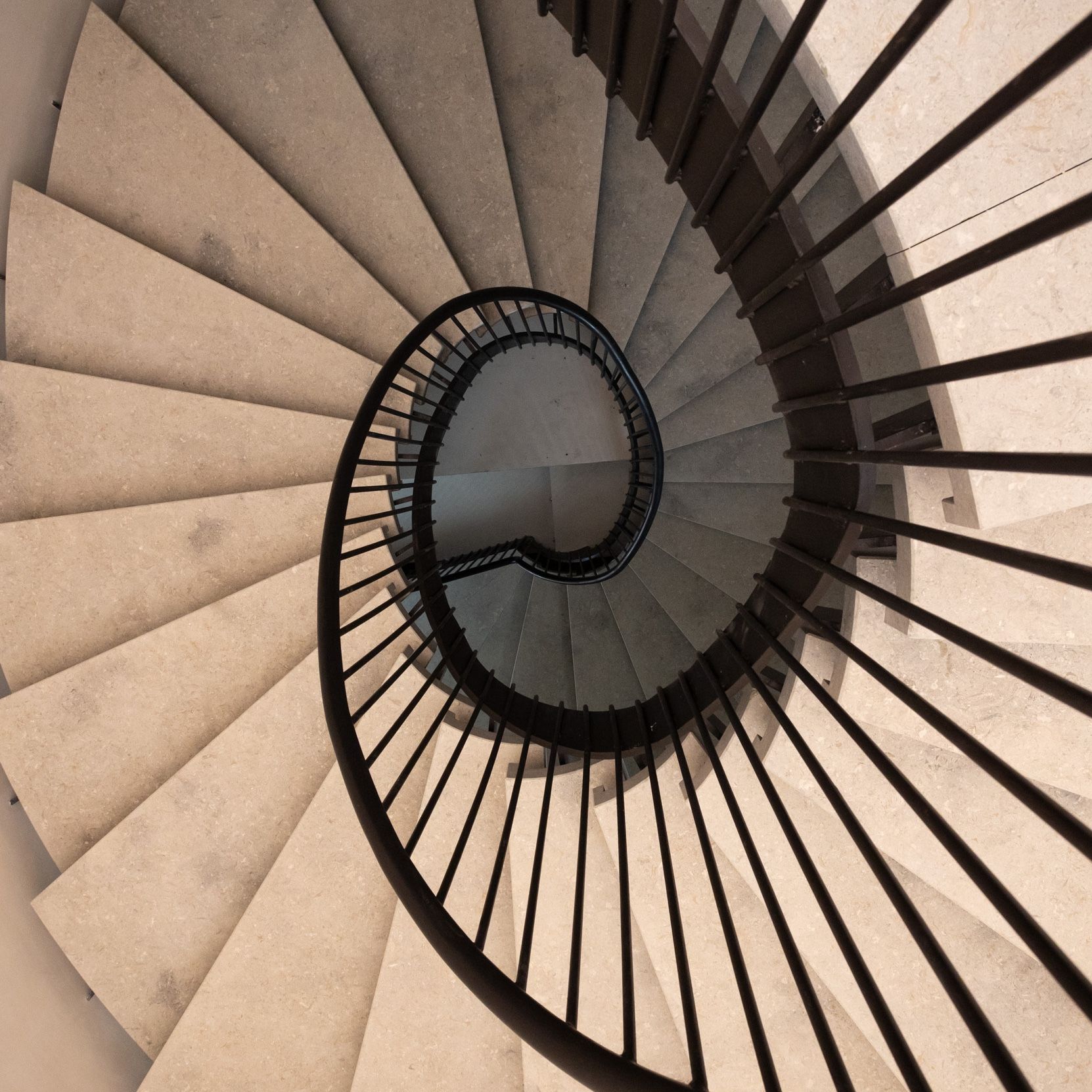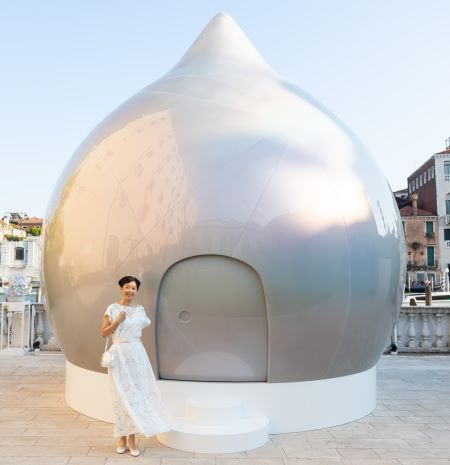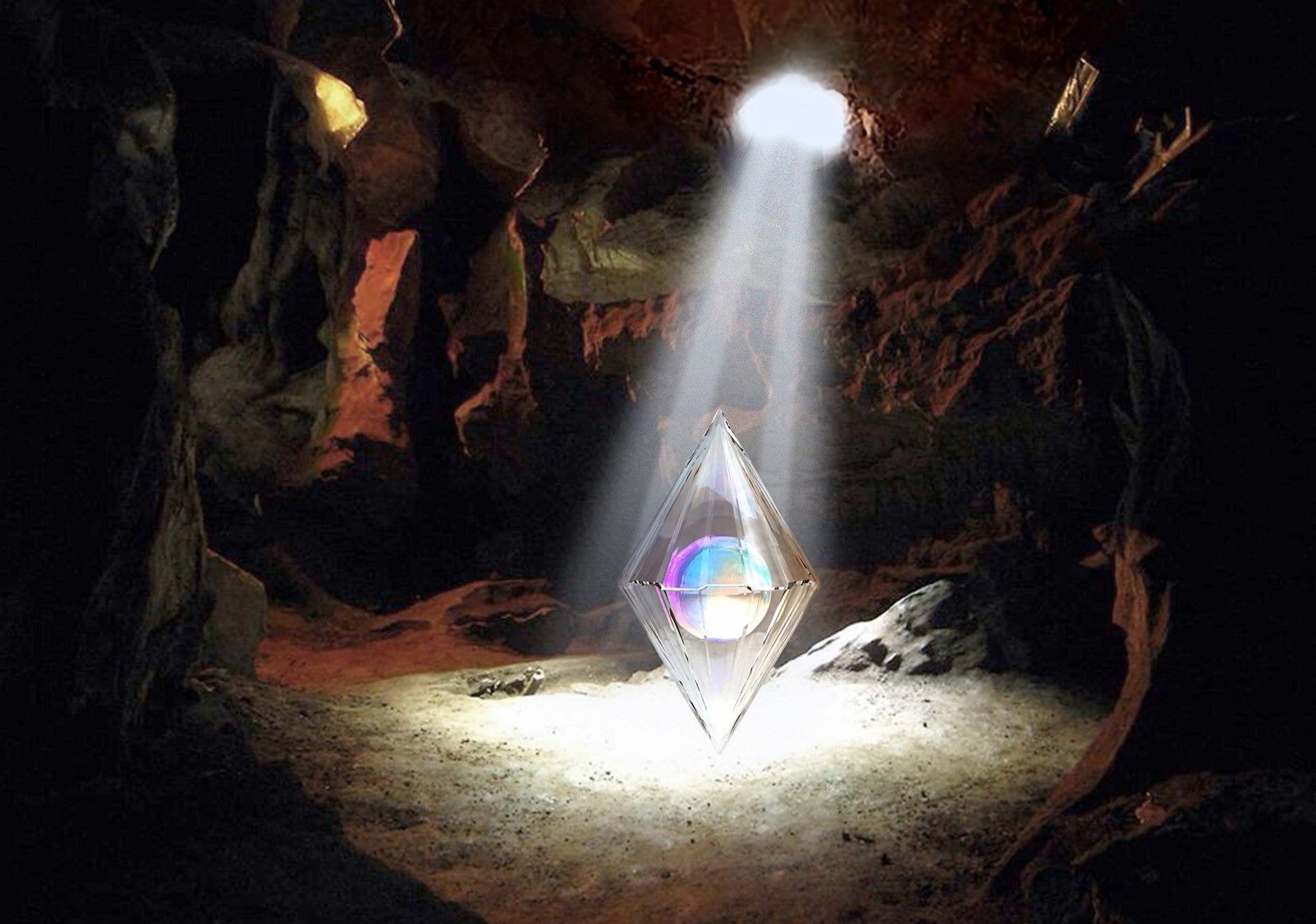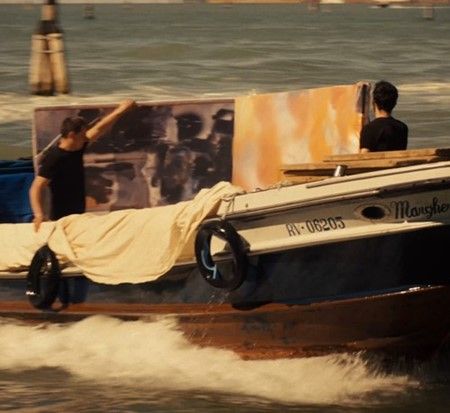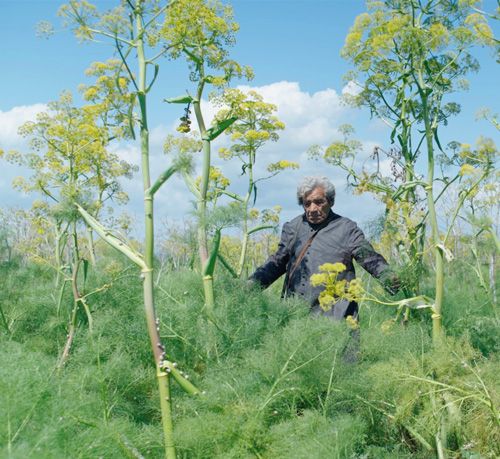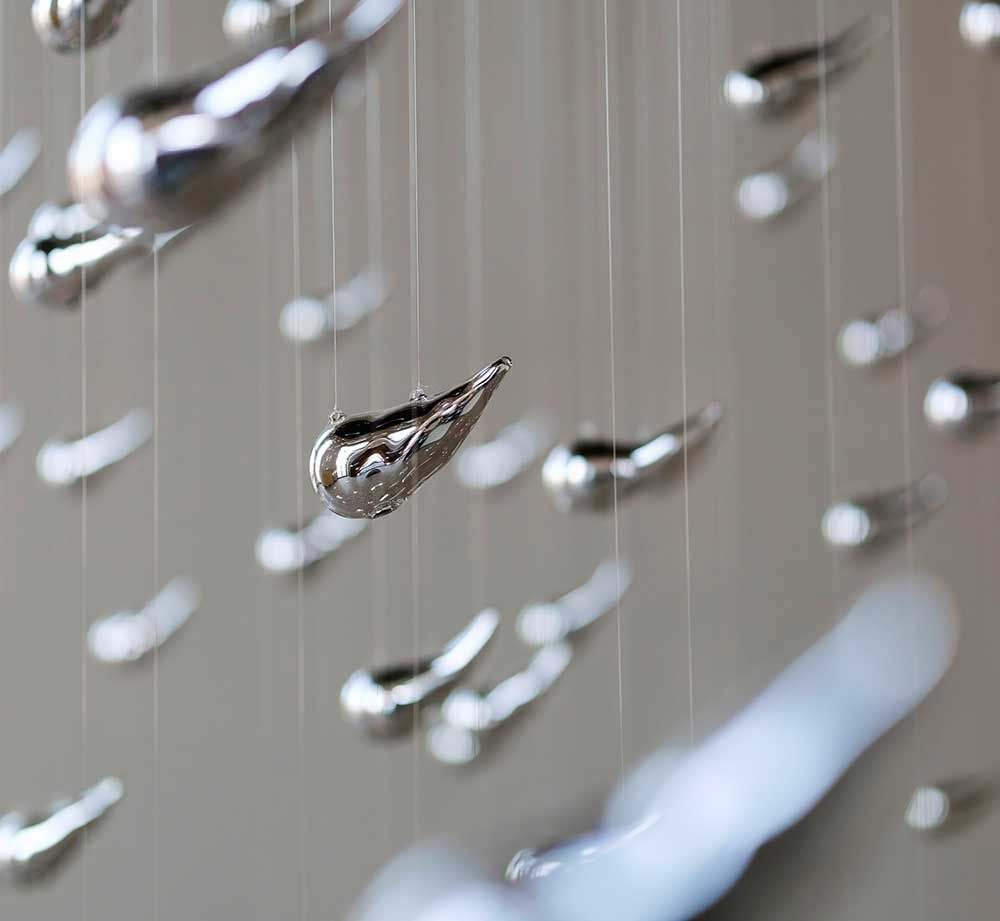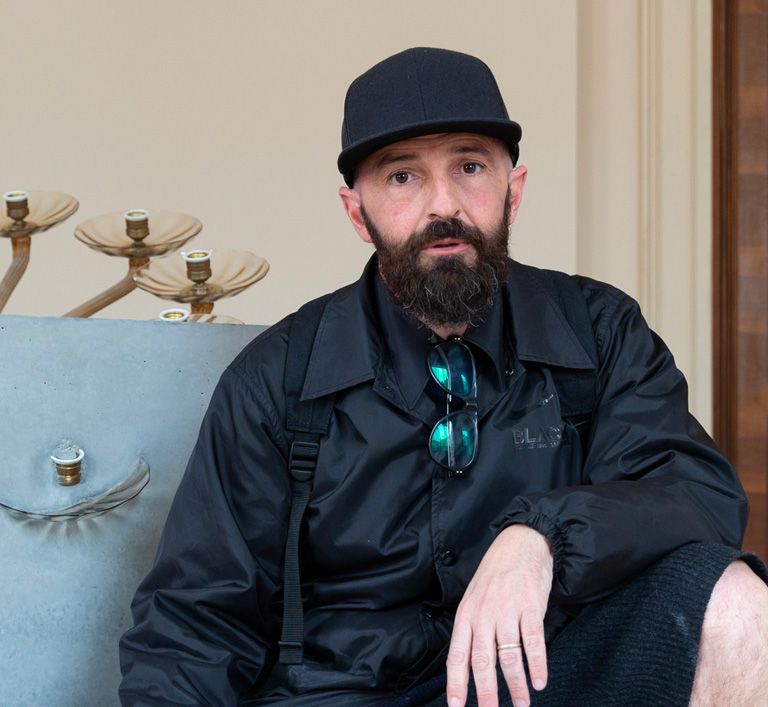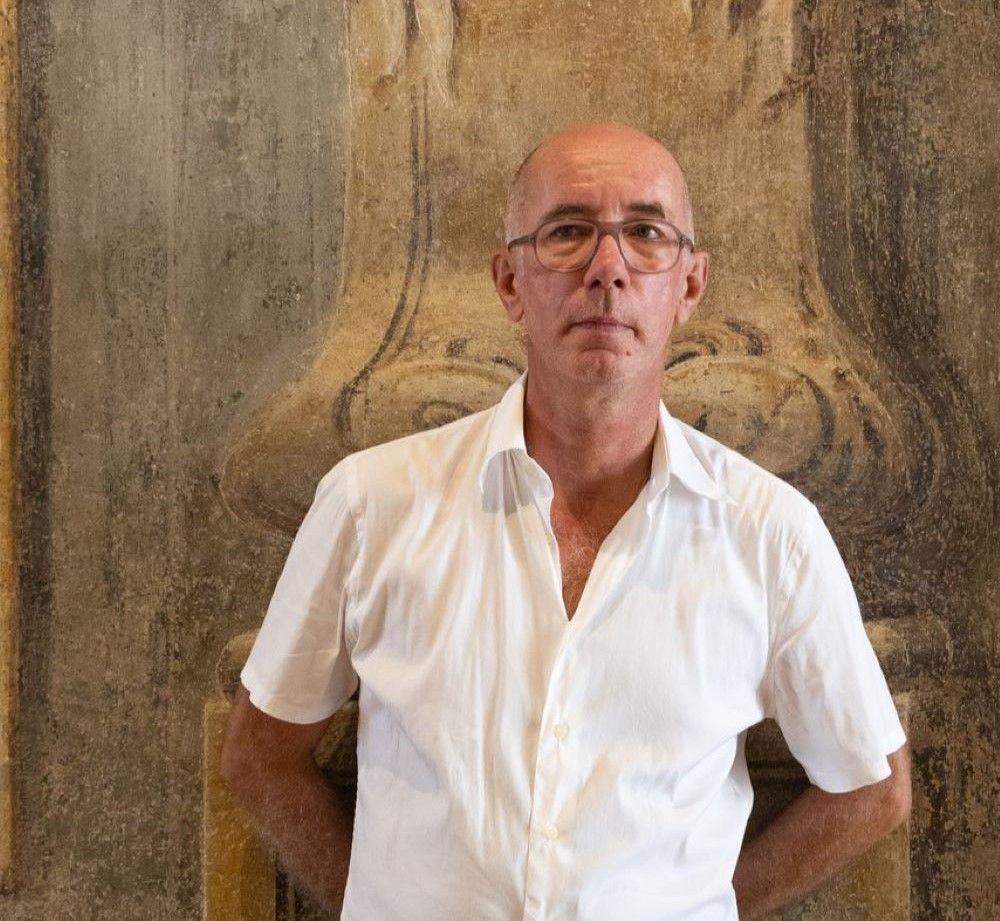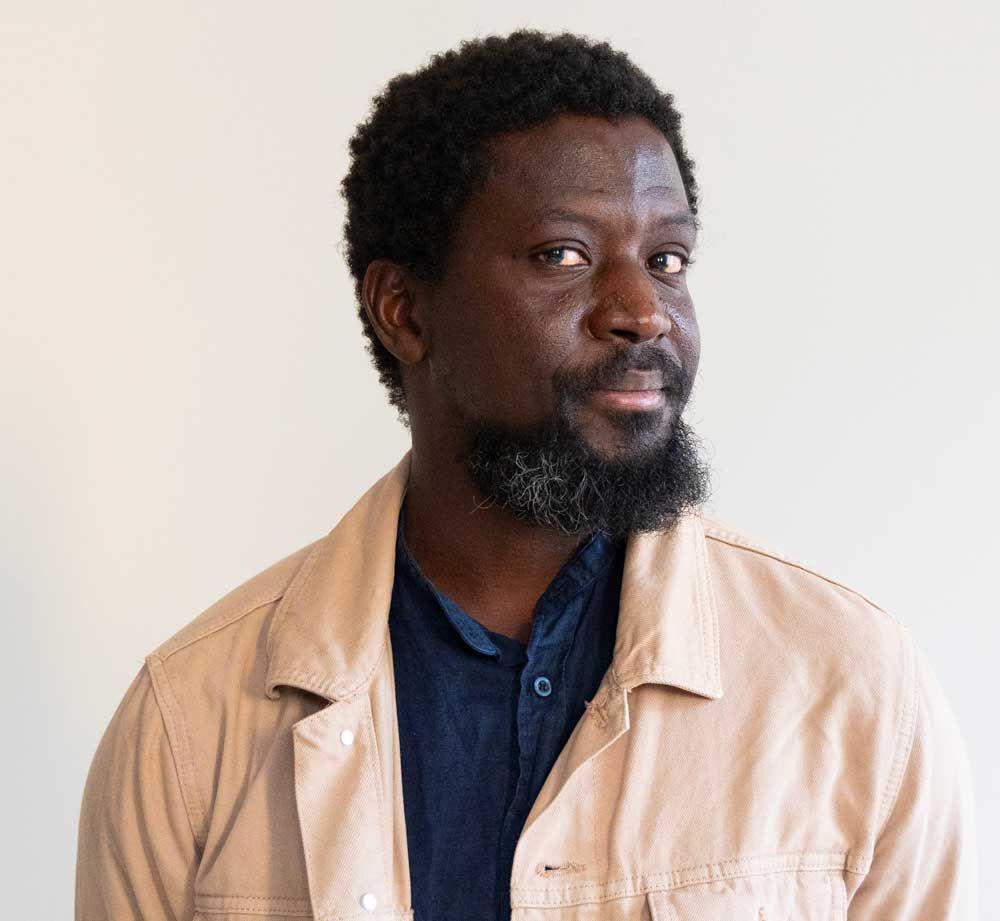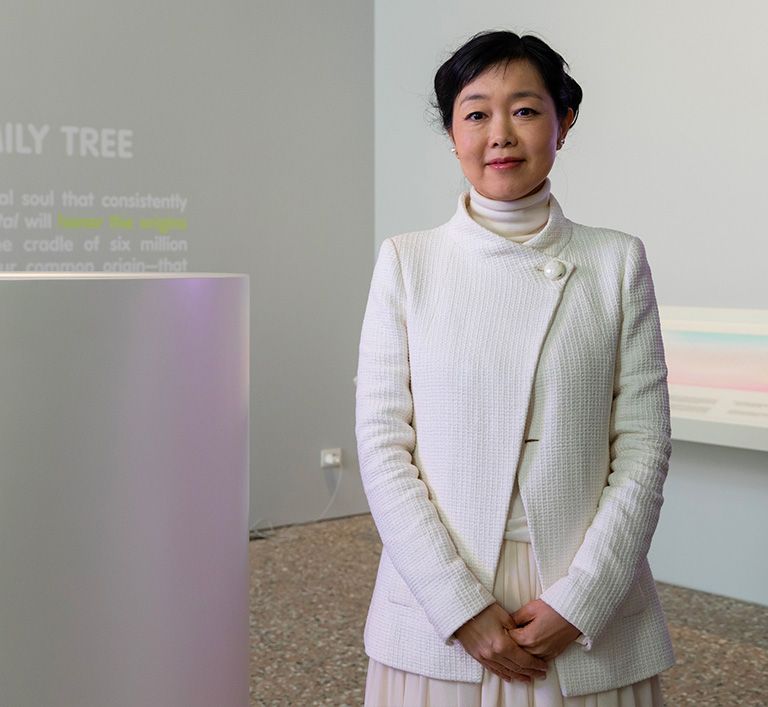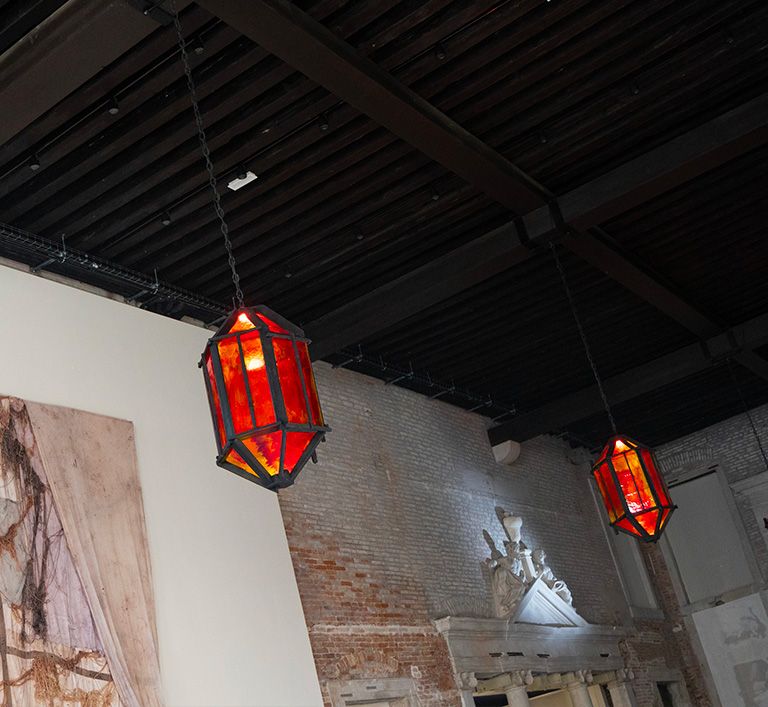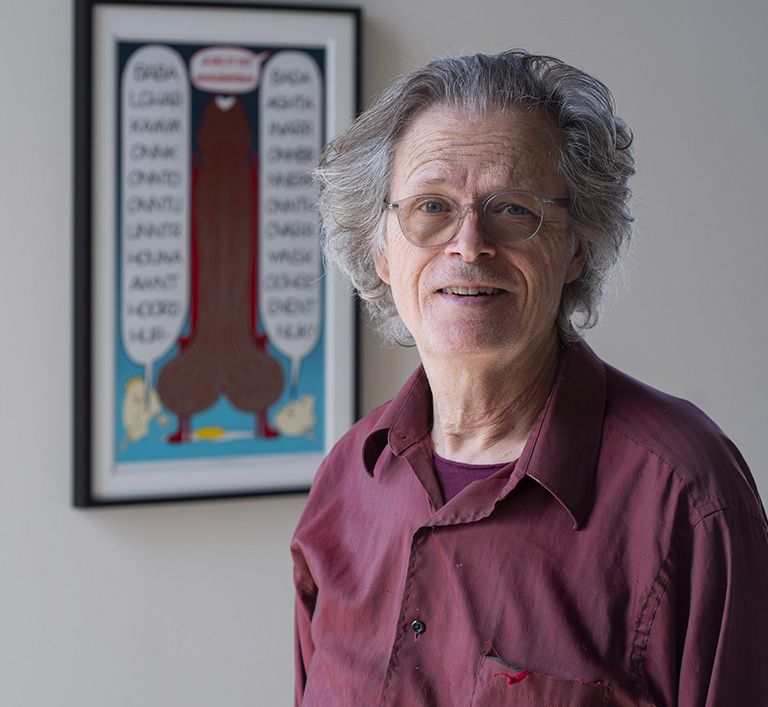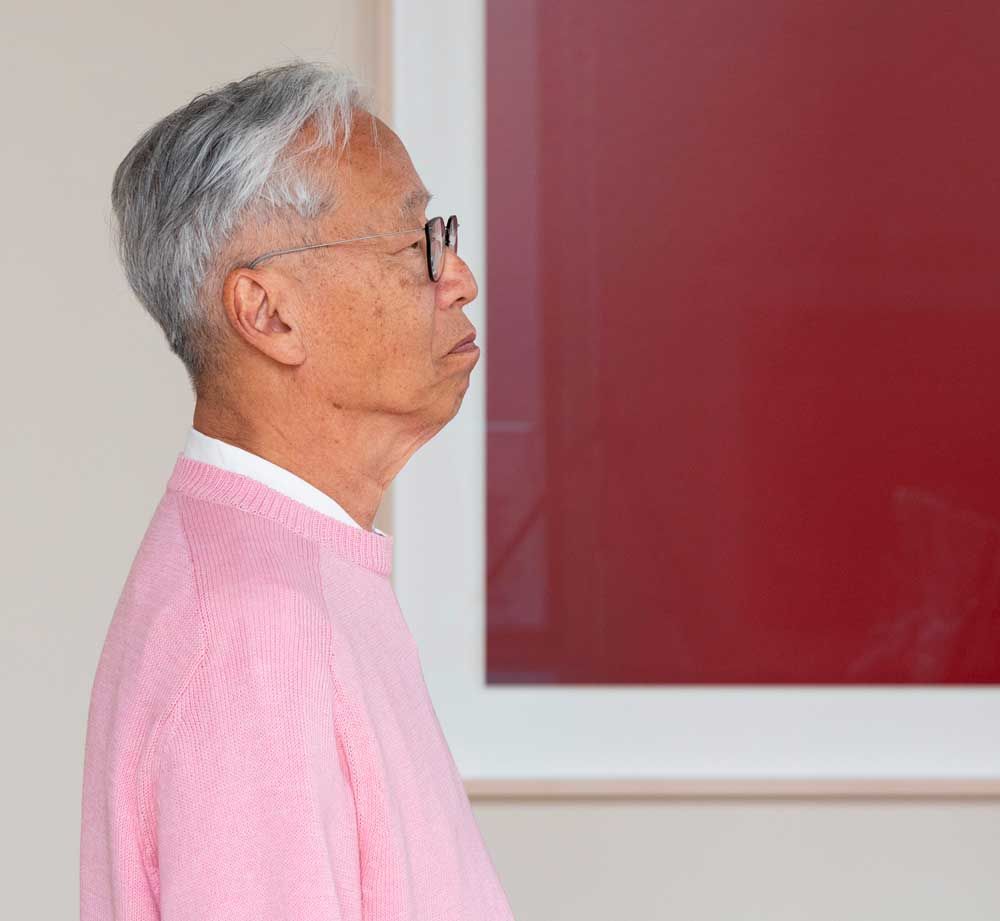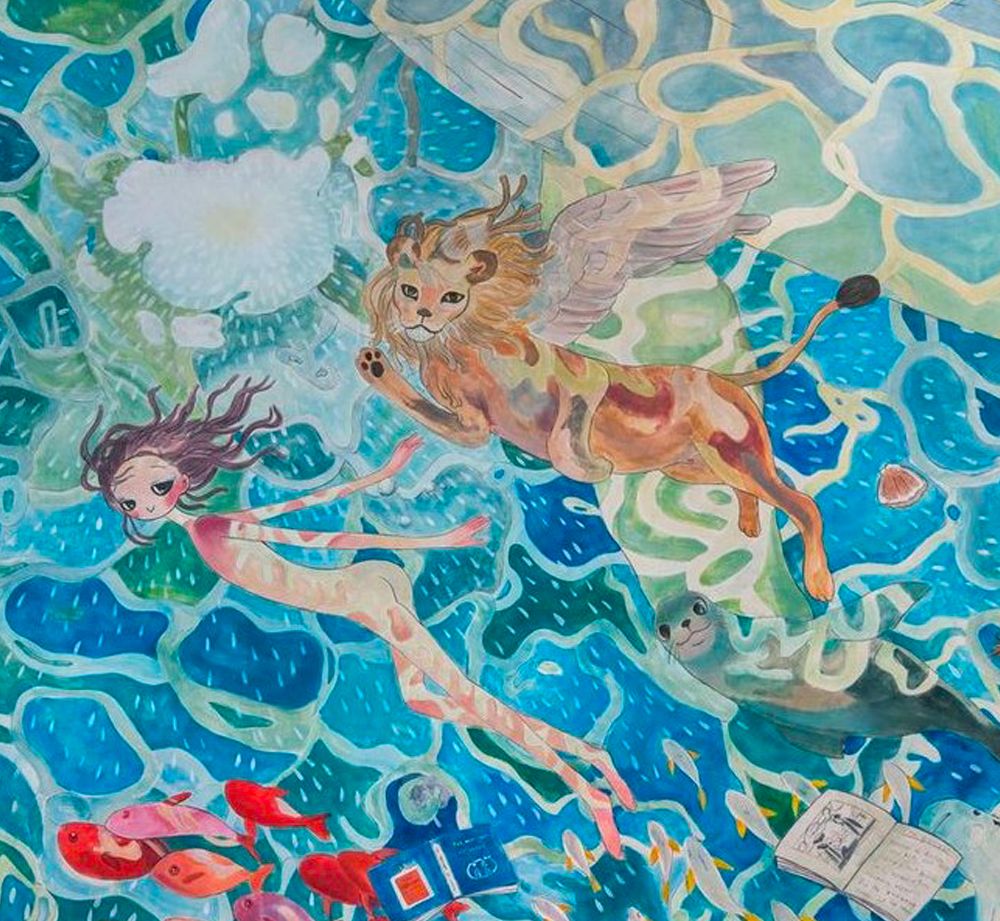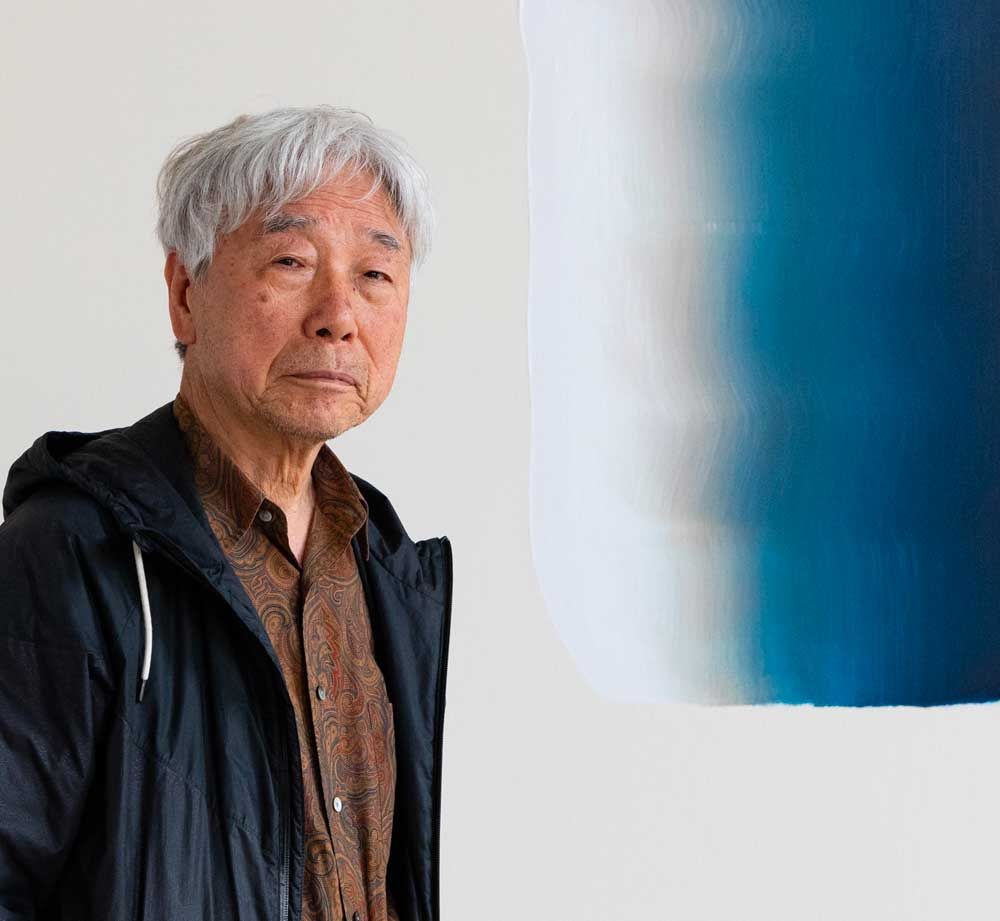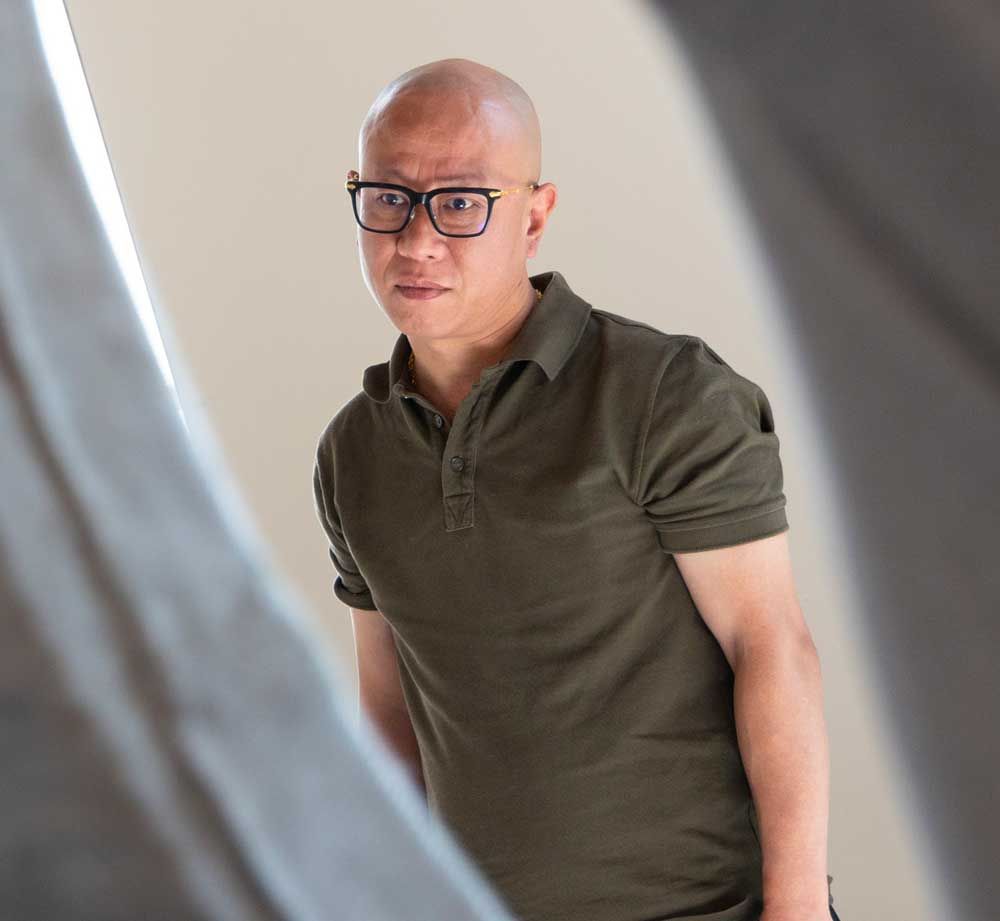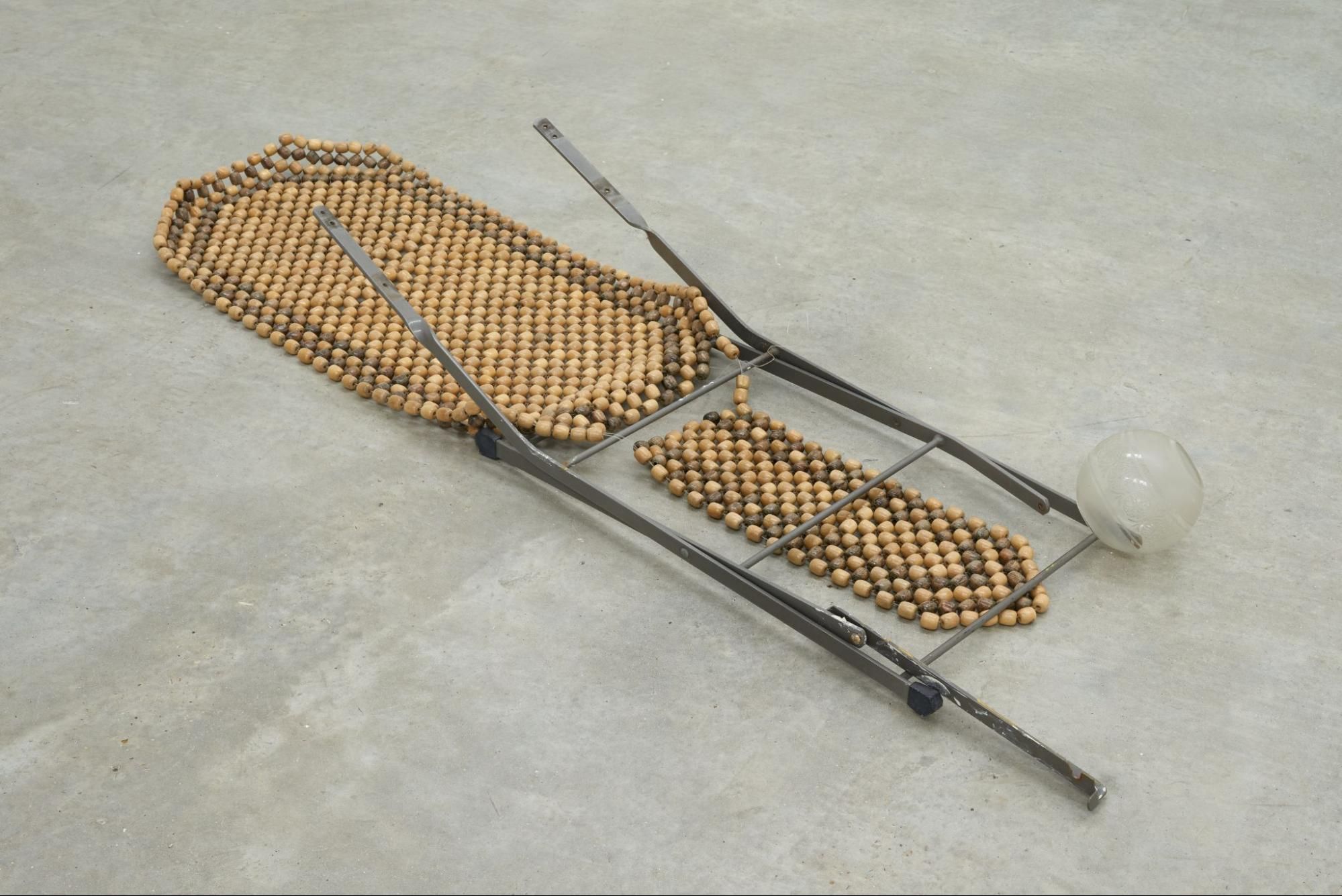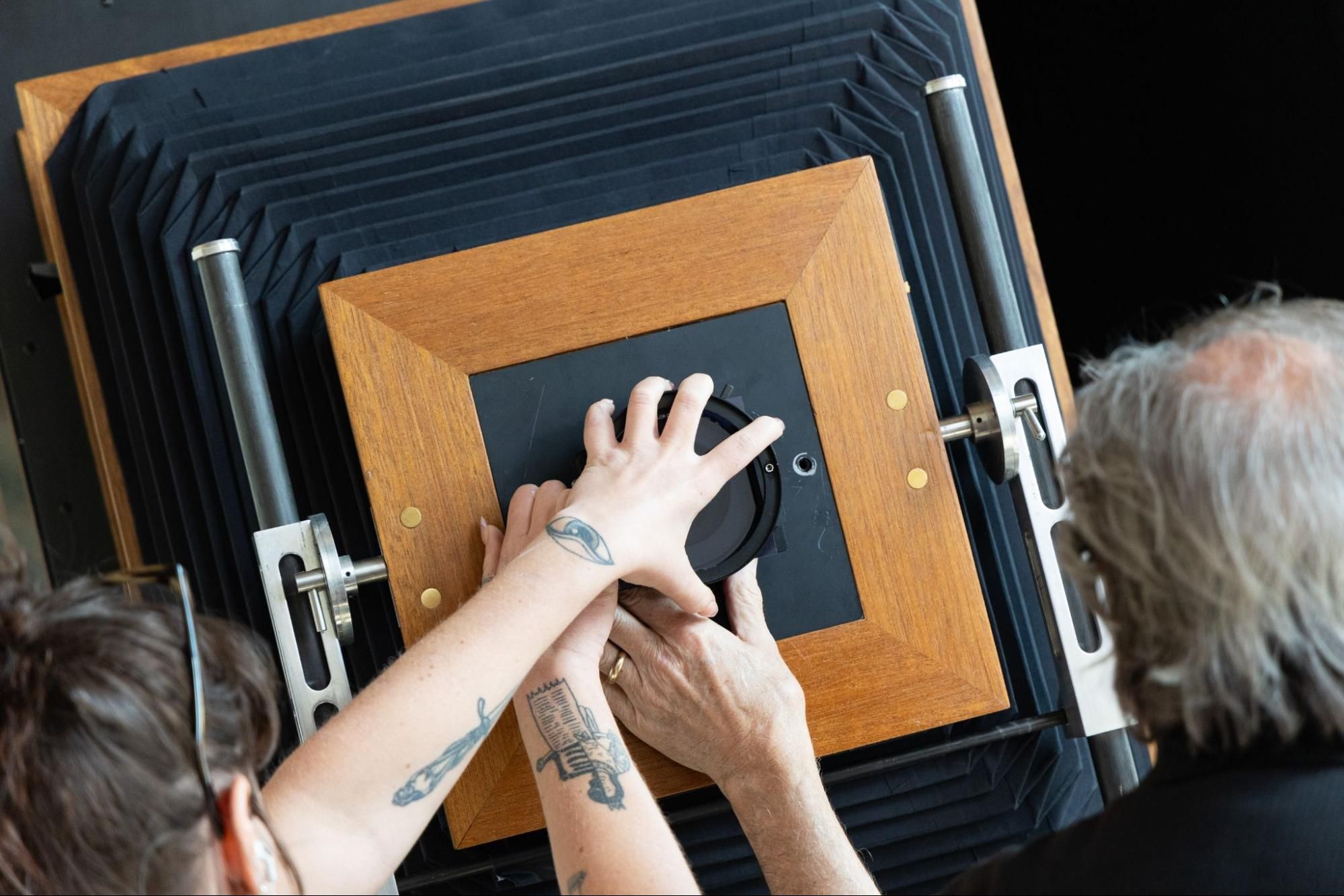Janus is the inaugural exhibition of Palazzo Diedo, bringing together eleven artists invited to craft site-specific works that directly relate to Venice’s architecture and enduring legacy of artisanal mastery. This includes the creation of frescos, canvases, Murano glass pieces, as well as the delicate textiles and terrazzo flooring.
The exhibition takes its name from Janus, one of the most ancient and venerated divinities of the Roman Pantheon, the god of beginnings and transitions who, with his two-faced iconography, is able to look simultaneously at the past and the future. Embracing the challenge, the artists confront the palace’s 18th-century spaces and offer contemporary interpretations imbued with individual sensibilities. Through their work, they breathe new life into the cherished crafts techniques that have enriched Venice’s illustrious history.
Starting with Liu Wei’s transformation of the entrance into a dreamlike immersive space populated by fantastic animals, the works insinuate themselves into all four floors, leveraging wonder and awe or affinity and mimesis. The original frescos and stuccos are alternated with ceilings featuring whimsical sky- and seascapes by Urs Fischer and AYA TAKANO, each offering their own unique take on art history and the symbols of Venetian iconography (respectively, Mantegna’s Bridal Chamber and the Merchant of Venice), alongside the large canvases by Mariko Mori and Hiroshi Sugimoto, who delve into their deeply personal concepts of light. From Lee Ufan’s conceptual brushstroke, executed using the ancient buon fresco technique, to Jim Shaw’s canvas affixed to the ceiling, with such a richness of details and symbols as to rival the most enigmatic allegorical themes of the past, and on to Ibrahim Mahama’s stucco piece, which in its subject and even more so in its process (it was produced in Ghana at the school he founded, Red Clay) prompts reflection on history and memory in order to address the changes needed to overcome the injustices of the world today.
The stear, the lights, the floor (Carsten Höller, Sterling Ruby, Piero Golia), all structural and functional elements of space, were equally implicated in the artists’ act of seduction: by employing traditional materials and techniques, they slyly camouflaged themselves in the space, setting the stage for a detournement of the observer’s experience at the moment of their perception.
To delve deeper into the poetics of the individual artists, alongside with the permanent works, the exhibition also presents newly produced works, or works conceptually linked to the context here.
An ideal metaphor for Palazzo Diedo’s aim of looking to the past to shed light on the future, Janus unites artists of diverse nationalities and cultures, serving as a bridge between east and west, south and north. By collectively contemplating the past and envisioning the future, we can cross the threshold that leads from the old to the new.
